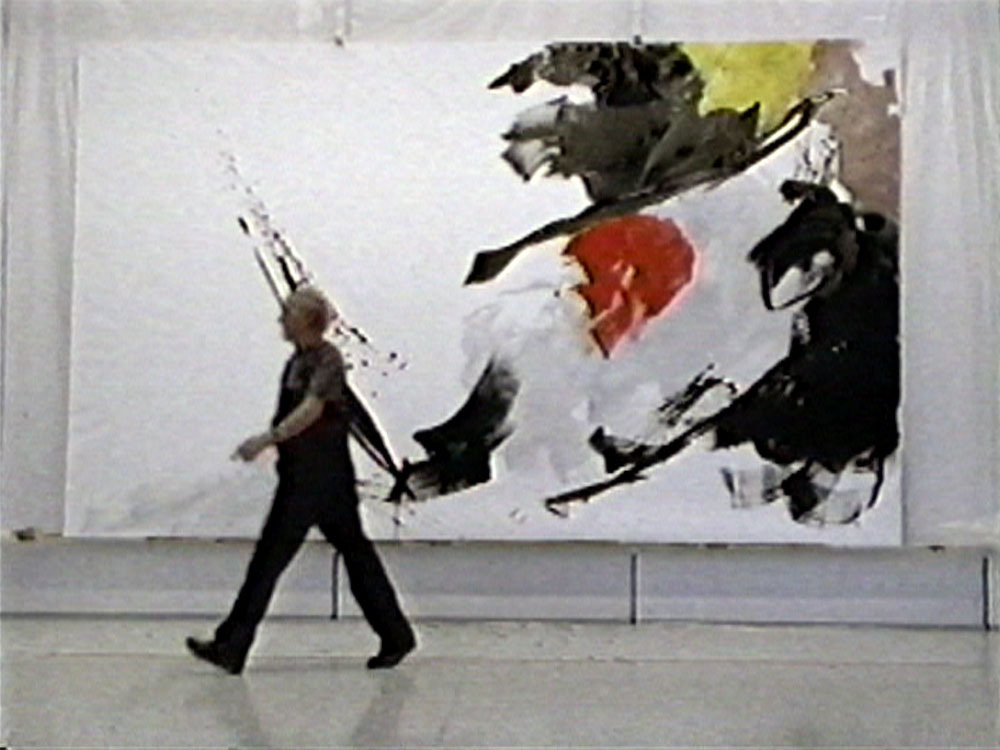After becoming acquainted following a film screening in Paris, the Chilean auteur Raúl Ruiz requested some of French abstractionist Jean Miotte’s paintings to hang in the office of Catherine Deneuve’s character in his 1997 surrealist film Genealogies of a Crime. The blunt movement of the paintings externalized both the homicidal tendencies of a young man on trial and the conflicted attorney at his defense, also marking the first time Miotte’s work was featured on-screen. The director and painter’s admiration for one another soon evolved to the point where the former shot an experimental documentary effectively deciphering and chronicling Miotte’s curious practices.
Comprising multiple filmed sessions in Miotte’s studios in New York, Hamburg, and the South of France, Miotte vu par Raúl Ruiz (2001) tenders a kind of artistic intervention generally uncharacteristic of art documentaries. Having directed 80 films at this point in his career, Ruiz had already keenly surveyed visual art in his films Sotelo (1976) and The Hypothesis of the Stolen Painting (1978), as well as short accompaniments to exhibits by Salvador Dalí and Öyvind Fahlström. In Miotte vu par Raúl Ruiz, the camera captures the volatile brushstrokes that constitute Miotte’s informalism—a kind of charged abstraction which gives the paintings their sense of athleticism and gesture.
In the film, Miotte is most notably shown painting onto glass panels in a manner reminiscent of Paul Haesaerts’s A Visit to Picasso (1950) and Henri-Georges Clouzot’s The Mystery of Picasso (1956); powder blue, vermillion, and black paint is pulled with aplomb along the transparent surface, mapping Miotte’s stance and reach with each stroke. A foreboding orchestral score piques as Miotte paints, eventually warping into comparably intense Japanese koto music. Such is the impression left by Miotte’s craft: an accessible ferocity and collision of style and temperament, like a Rorschach test revealing itself in real time.
Another scene involves the creation of a new work as seen by a camera affixed to a paintbrush—a mode of surveillance that considers how the apparatus can be mechanically implicated in the act of painting. This hybridized paintbrush-lens enables a pure alignment while also paying obsessive attention to technique, narrowing in on Miotte’s anxieties. “Painting is not a supposition of the spirit or the intellect; it is an attitude from within,” says Miotte, who does not speak until halfway through the film, and only when he expresses his frustrations with a piece that will not sufficiently “open up.” As he puts it, “it has to appear all of a sudden and completely by itself,” a coy footnote to a film spent cataloging the physicality and purposiveness of the artist.
Miotte vu par Raúl Ruiz screens this afternoon, November 23, at L’Alliance New York as part of “Back and Forth: Dialogues with Painting and Film.” It will be preceded by Michel Auder’s Alice Neel Paints Margaret.



